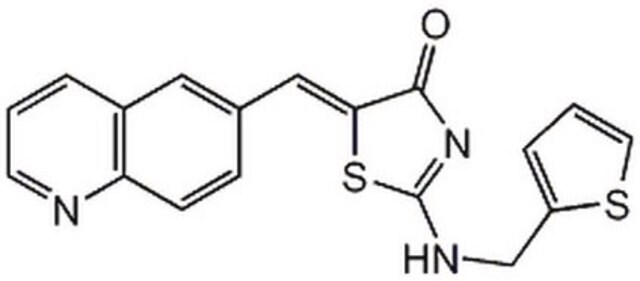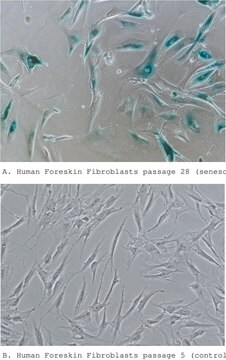238803
Cdk2 Inhibitor III
The Cdk2 Inhibitor III, also referenced under CAS 199986-75-9, controls the biological activity of Cdk2. This small molecule/inhibitor is primarily used for Phosphorylation & Dephosphorylation applications.
Synonim(y):
Cdk2 Inhibitor III, 2( bis-(Hydroxyethyl)amino)-6-(4-methoxybenzylamino)-9-isopropyl-purine, CVT-313, 2(bis-(Hydroxyethyl)amino)-6-(4-methoxybenzylamino)-9-isopropyl-purine, CVT-313
About This Item
Polecane produkty
Poziom jakości
Próba
≥98% (HPLC)
Postać
solid
producent / nazwa handlowa
Calbiochem®
warunki przechowywania
OK to freeze
protect from light
kolor
white
rozpuszczalność
DMSO: 10 mg/mL
Warunki transportu
ambient
temp. przechowywania
2-8°C
InChI
1S/C20H28N6O3/c1-14(2)26-13-22-17-18(21-12-15-4-6-16(29-3)7-5-15)23-20(24-19(17)26)25(8-10-27)9-11-28/h4-7,13-14,27-28H,8-12H2,1-3H3,(H,21,23,24)
Klucz InChI
NQVIIUBWMBHLOZ-UHFFFAOYSA-N
Opis ogólny
Działania biochem./fizjol.
Cdk2/A, Cdk2/E
Opakowanie
Ostrzeżenie
Rekonstytucja
Inne uwagi
Brooks, E.E., et al. 1997. J. Biol. Chem.272, 29207.
Informacje prawne
Kod klasy składowania
11 - Combustible Solids
Klasa zagrożenia wodnego (WGK)
WGK 1
Certyfikaty analizy (CoA)
Poszukaj Certyfikaty analizy (CoA), wpisując numer partii/serii produktów. Numery serii i partii można znaleźć na etykiecie produktu po słowach „seria” lub „partia”.
Masz już ten produkt?
Dokumenty związane z niedawno zakupionymi produktami zostały zamieszczone w Bibliotece dokumentów.
Nasz zespół naukowców ma doświadczenie we wszystkich obszarach badań, w tym w naukach przyrodniczych, materiałoznawstwie, syntezie chemicznej, chromatografii, analityce i wielu innych dziedzinach.
Skontaktuj się z zespołem ds. pomocy technicznej








